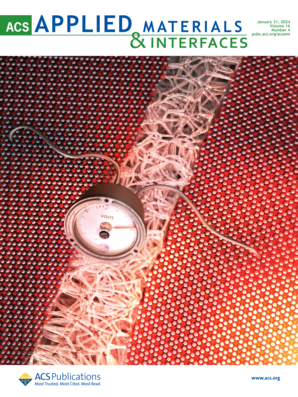Microwave-Assisted Catalytic Upcycling of Plastic Wastes over Heterojunction-Structured Layered Triple Oxides
IF 8.3
2区 材料科学
Q1 MATERIALS SCIENCE, MULTIDISCIPLINARY
引用次数: 0
Abstract
Chemical upcycling of plastic wastes into valuable chemical feedstocks and simultaneous mitigation of environmental deterioration are fascinating but remain extremely challenging. Herein, we report microwave-assisted valorization of plastic wastes into carbon nanotubes (CNTs) and hydrogen (H2) over heterojunction-structured mixed metal oxides. Specifically, the CoNiFe-based layered triple oxides (LTO) arrayed on Ni-foam (CoNiFe-LTO@foam) were constructed. The special heterojunction of the LTO endows high dielectric loss, facilitating efficient conversion of absorbed microwave energy into thermal energy. Most importantly, the synergistic effect of the multiple transition metal sites boosts the cleavage of carbon chains and dehydrogenation, thereby accelerating the reaction kinetics. As a result, the CoNiFe-LTO@foam achieves an H2 selectivity of ∼95 vol % with the yield of ∼69 for upcycling polyethylene in 25 cycles of measurement. Simultaneously, the CNTs attain a yield of ∼35%, which can be used for aqueous chloride-ion batteries. Additionally, the CoNiFe-LTO@foam enables facile recovery of CNTs and prevents the loss of catalytic sites, facilitating upcycling of various real-world plastic wastes. Our work thus highlights the innovations of an advanced catalytic system for forming a closed loop of plastic C/H and achieving the ultimate goal of a carbon-neutral society.

微波辅助异质结结构层状三氧化物催化塑料垃圾升级回收
将塑料废物化学升级为有价值的化学原料,同时缓解环境恶化,这是令人着迷的,但仍然极具挑战性。在此,我们报道了微波辅助下塑料废物在异质结结构的混合金属氧化物上转化为碳纳米管(CNTs)和氢(H2)。具体而言,构建了排列在Ni-foam (CoNiFe-LTO@foam)上的针叶基层状三氧化物(LTO)。LTO特殊的异质结具有较高的介电损耗,有利于吸收的微波能有效地转化为热能。最重要的是,多个过渡金属位点的协同作用促进了碳链的裂解和脱氢,从而加快了反应动力学。结果,CoNiFe-LTO@foam在25个循环的测量中实现了H2选择性为~ 95 vol %,产率为~ 69 mmol·gplastic−1。同时,碳纳米管的产率达到~ 35%,可用于氯离子水溶液电池。此外,CoNiFe-LTO@foam可以方便地回收碳纳米管,防止催化位点的损失,促进各种现实世界的塑料废物的升级回收。因此,我们的工作突出了先进催化系统的创新,该系统可形成塑料C/H闭环,并实现碳中和社会的最终目标。
本文章由计算机程序翻译,如有差异,请以英文原文为准。
求助全文
约1分钟内获得全文
求助全文
来源期刊

ACS Applied Materials & Interfaces
工程技术-材料科学:综合
CiteScore
16.00
自引率
6.30%
发文量
4978
审稿时长
1.8 months
期刊介绍:
ACS Applied Materials & Interfaces is a leading interdisciplinary journal that brings together chemists, engineers, physicists, and biologists to explore the development and utilization of newly-discovered materials and interfacial processes for specific applications. Our journal has experienced remarkable growth since its establishment in 2009, both in terms of the number of articles published and the impact of the research showcased. We are proud to foster a truly global community, with the majority of published articles originating from outside the United States, reflecting the rapid growth of applied research worldwide.
 求助内容:
求助内容: 应助结果提醒方式:
应助结果提醒方式:


